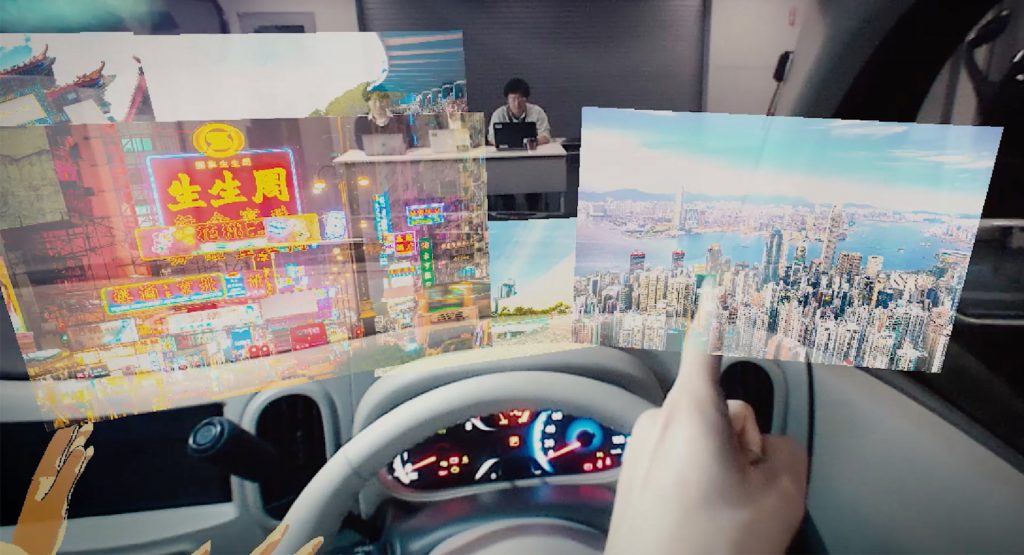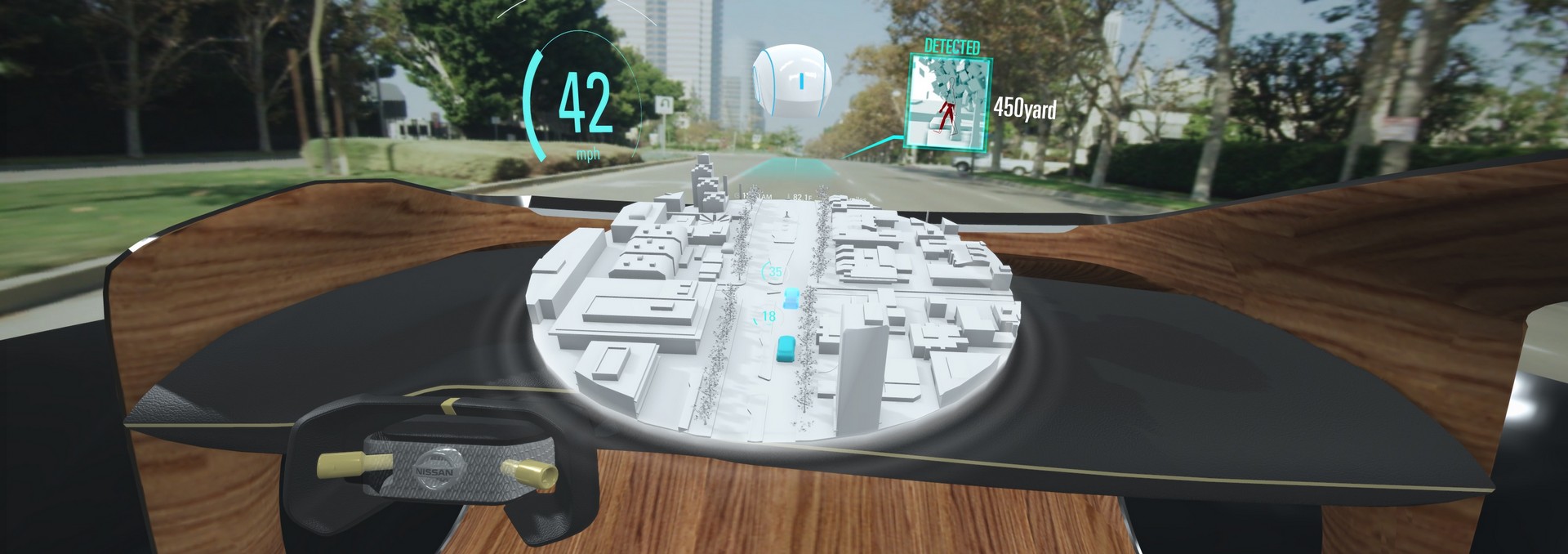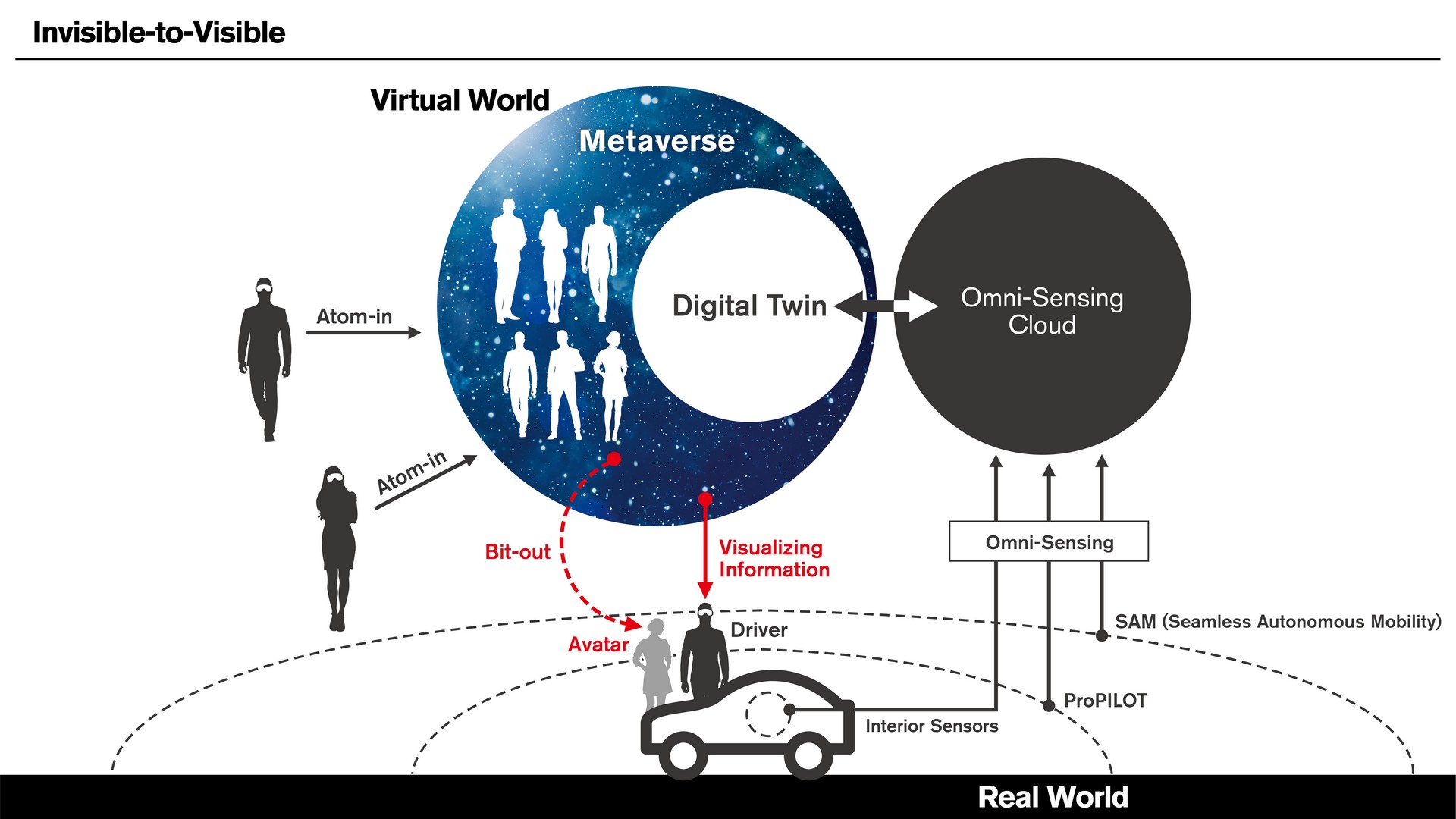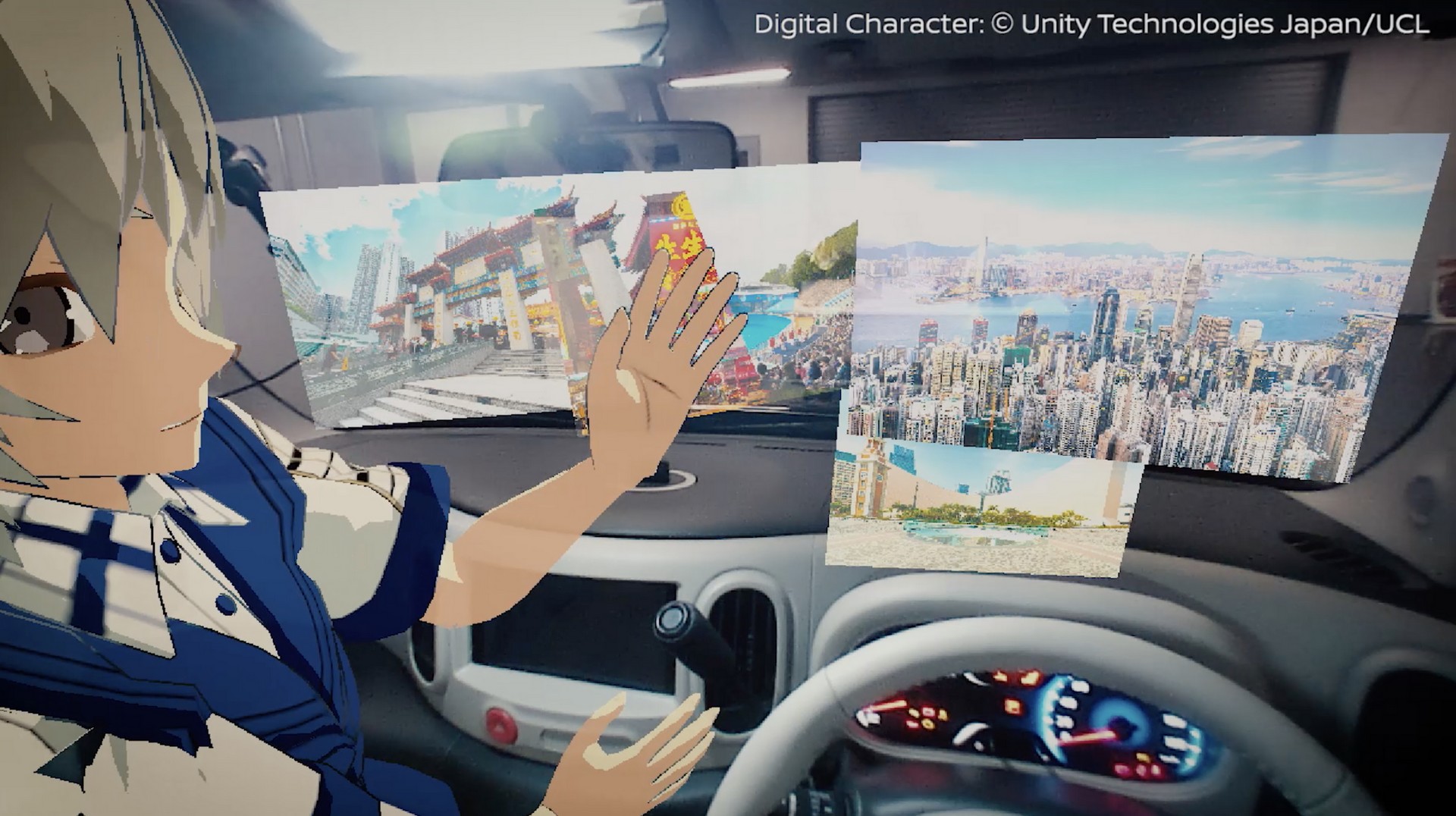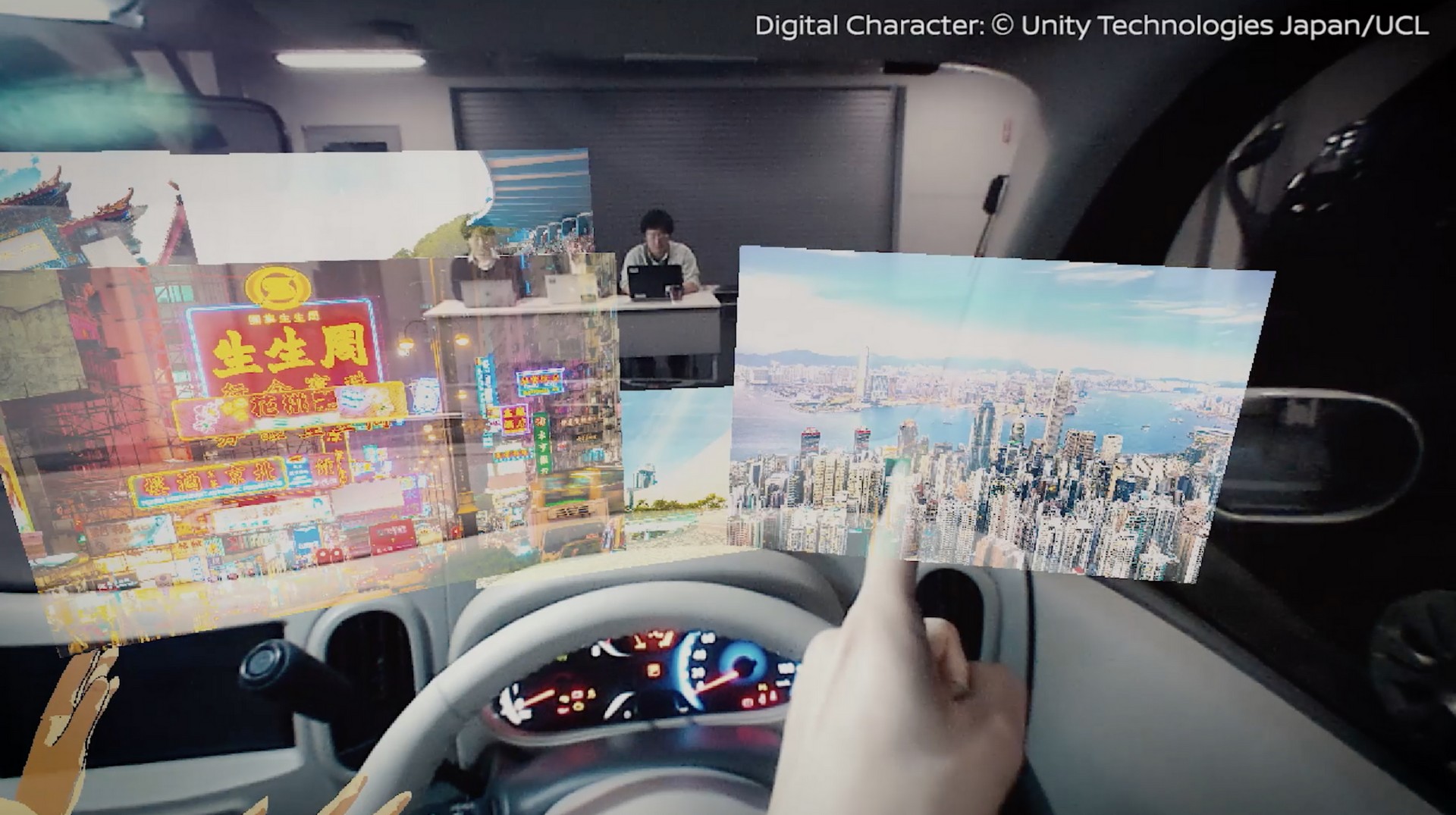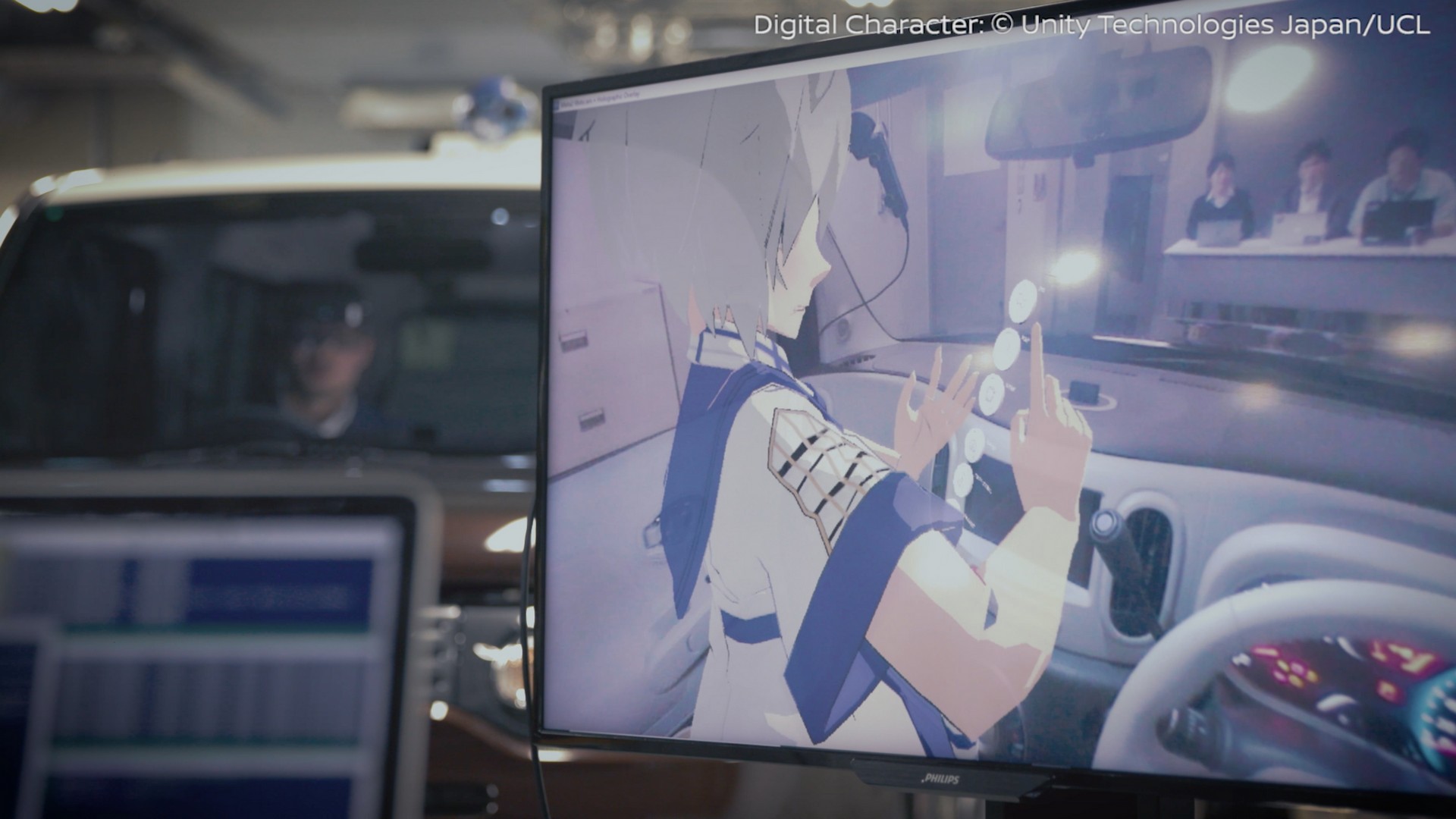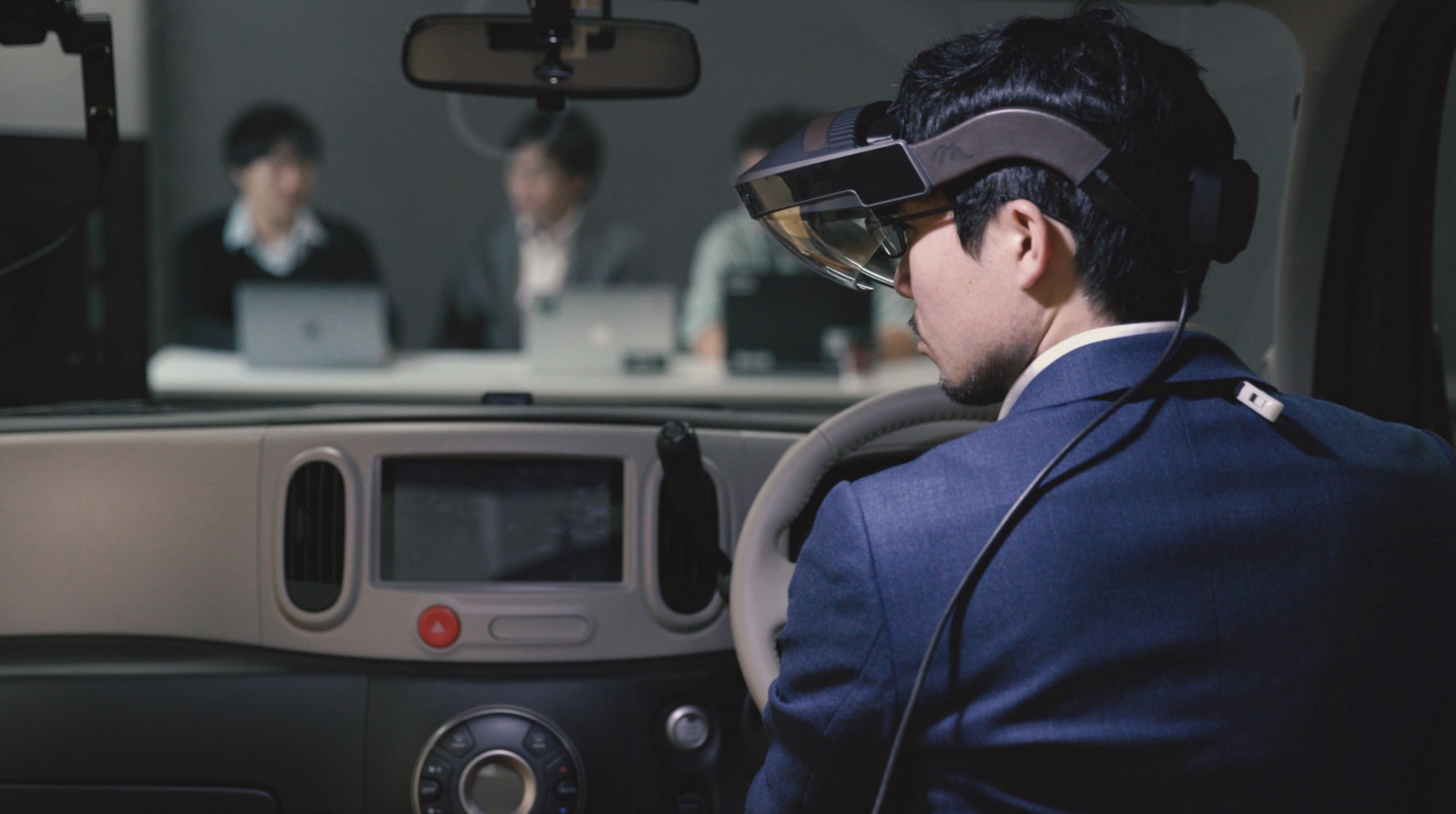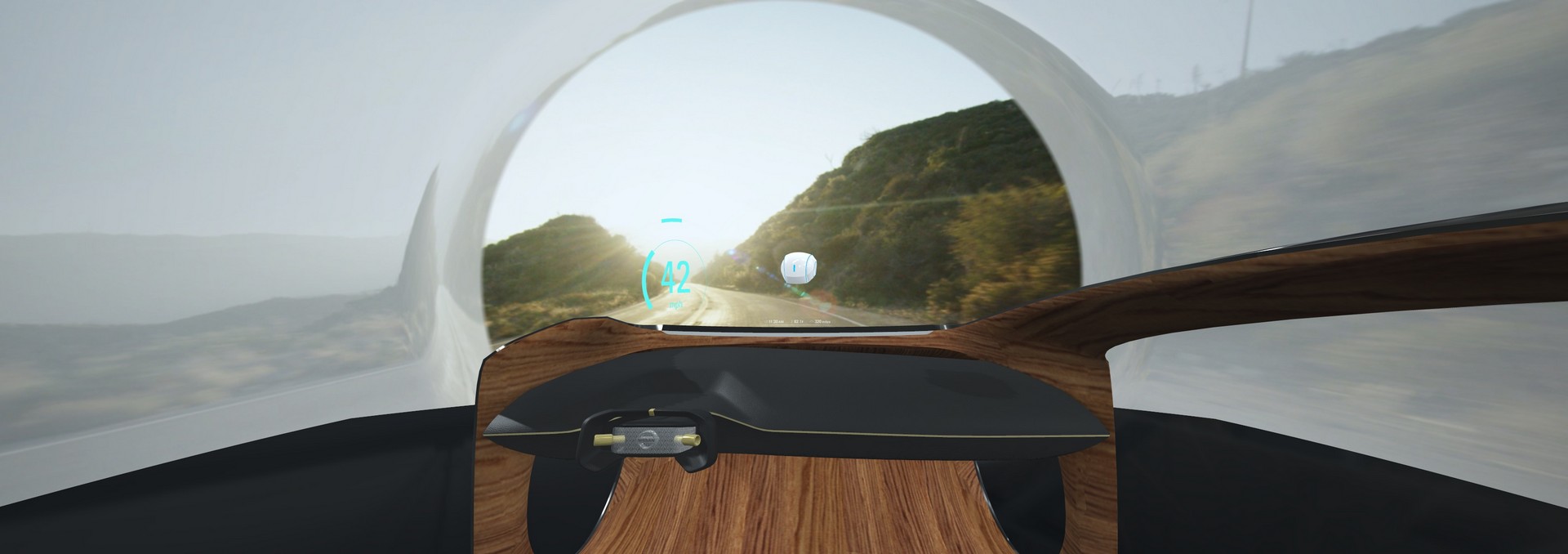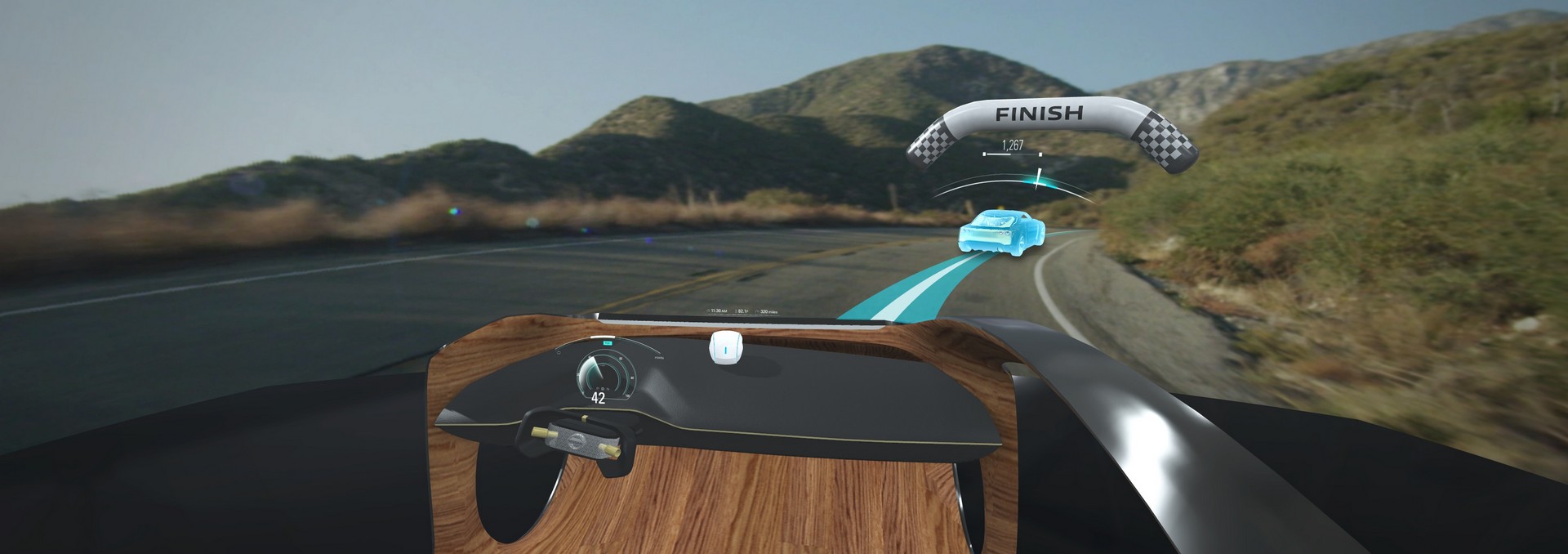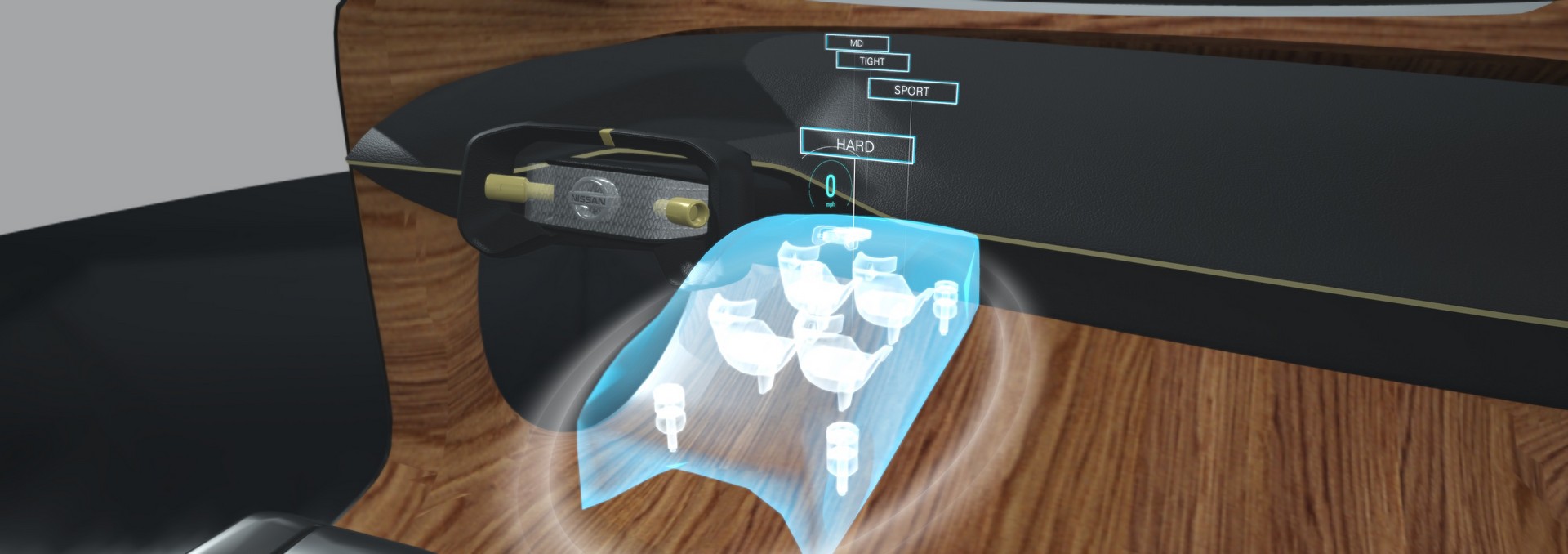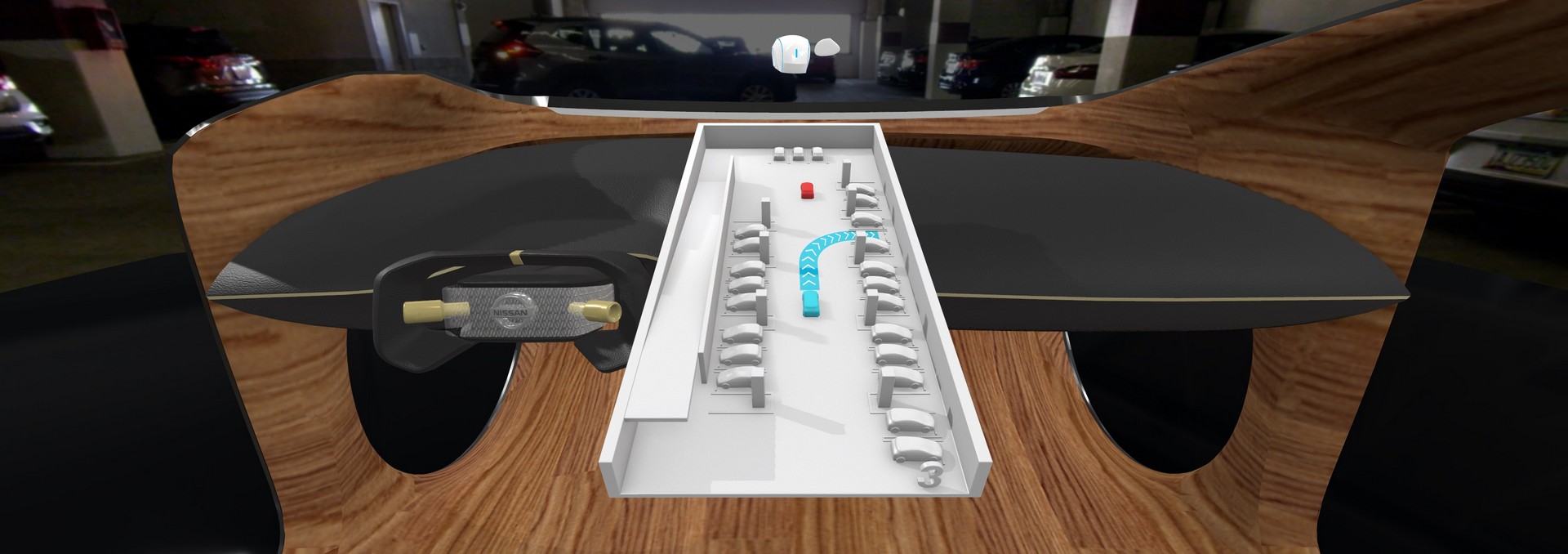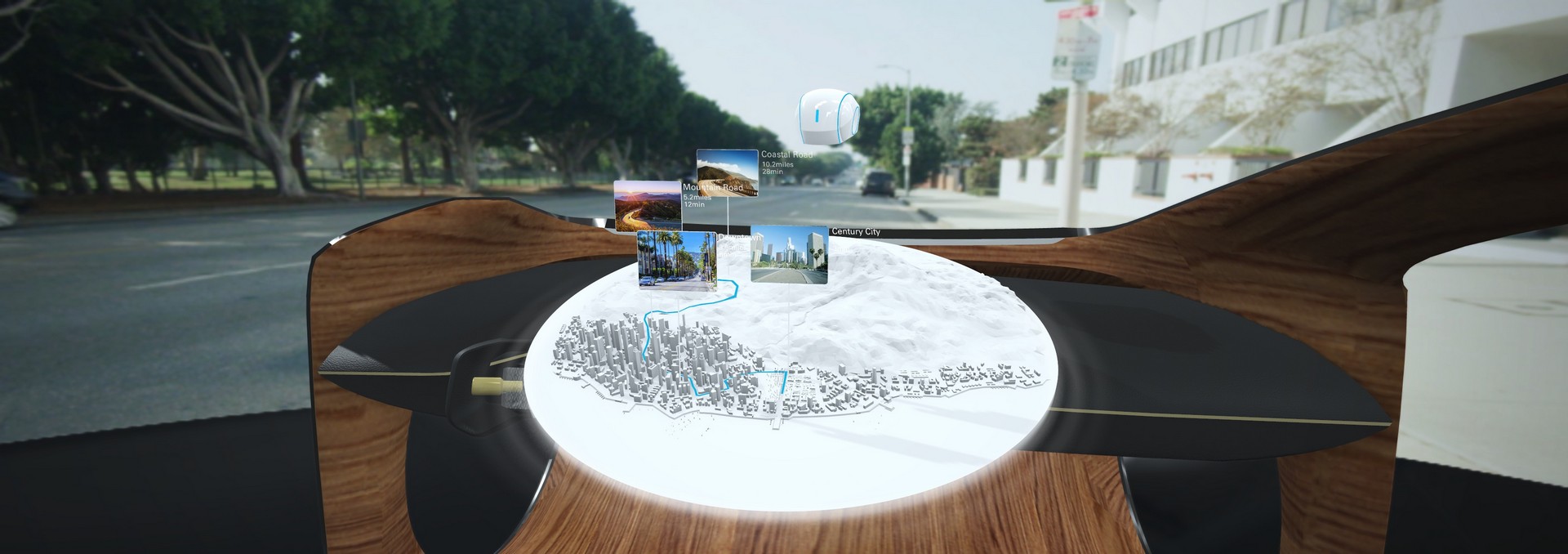Following a preview last month, Nissan has unveiled their new Invisible-to-Visible technology ahead of its debut at CES.
Dubbed I2V, the technology merges information gathered from sensors inside and outside the vehicle with data stored in the cloud. This enables the system to “not only to track the vehicle’s immediate surroundings, but also to anticipate what’s ahead – even showing what’s behind a building or around the corner.”
Seeing the invisible promises to drastically improve navigation and the company says the system will also display information about congestion and estimated travel times. The technology can also give extremely detailed suggestions such as which lane is moving the fastest in heavy traffic.
While the technology is a bit complex to explain, Nissan says the sensors create a 360° map of the vehicle’s surroundings. This enables the system to provide information about things such as nearby pedestrians, street signs and upcoming intersections.
The technology can also monitor people inside the vehicle and this will allow cars to better anticipate the needs of drivers. As an example, Nissan says the car could determine when drivers need assistance or when they’re tired and might need a coffee break.
The technology isn’t just limited to mundane tasks either as Nissan says an assortment of other information could be projected inside the vehicle. This could include everything from a local travel guide giving information about the latest hot spots to friends and family that appear as “three-dimensional, augmented-reality avatars to provide company or assistance.”
The technology has been designed to work with autonomous and conventionally driven vehicles, but Nissan notes it’s simply a vision of what’s possible in the future. As a result, the technology requires donning a pair of augmented-reality goggles and stepping inside a demonstration cockpit.




